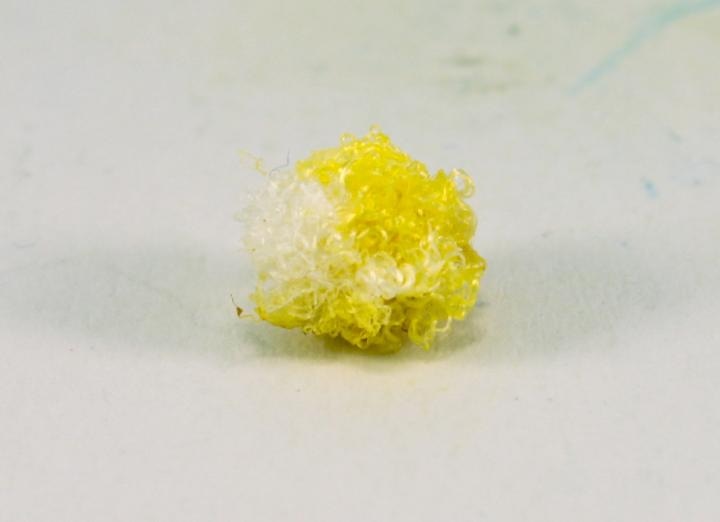Sep 15 2017
A new study suggests that the need for applying chemical treatments to fabrics in order to achieve properties such as magnetism or fluorescence could one day be eliminated by cotton that is grown with molecules endowing these appealing properties.
 Digital camera image from in vitro cotton model after incorporation of exogenous molecules with new functionalities. This material relates to a paper that appeared in the Sept. 15, 2017, issue of Science, published by AAAS. The paper, by F. Natalio at Martin-Luther-Universität Halle-Wittenberg in Halle, Germany, and colleagues was titled, "Biological fabrication of cellulose fibers with tailored properties." CREDIT Filipe Natalio
Digital camera image from in vitro cotton model after incorporation of exogenous molecules with new functionalities. This material relates to a paper that appeared in the Sept. 15, 2017, issue of Science, published by AAAS. The paper, by F. Natalio at Martin-Luther-Universität Halle-Wittenberg in Halle, Germany, and colleagues was titled, "Biological fabrication of cellulose fibers with tailored properties." CREDIT Filipe Natalio
A variety of appealing properties can be obtained by applying synthetic polymers to fabrics, but anything added to a fabric can get worn away or washed. Additionally, while several fibers employed in fabrics are synthetic (for example, polyester) a few consumers desire natural fibers in order to avoid issues associated with weight, smoothness, skin irritation, and sensation. Here, Filipe Natalio and colleagues developed cotton fibers capable of integrating composites with magnetic and fluorescent properties. This was followed by synthesizing glucose derivatives that provide the necessary molecules into the growing ovules of the cotton plant, Gossypium hirsutum. The molecules are thus embedded into the cotton fibers themselves, instead of being added in the form of a chemical treatment. The resulting fibers showed magnetic or fluorescent properties, respectively, even though they were weaker than raw fibers deficient of the embedded composites, the authors report. The authors further suggest that it could be possible to expand similar techniques to other biological systems such as bamboo, bacteria, flax, and silk - basically opening a new era of "material farming."